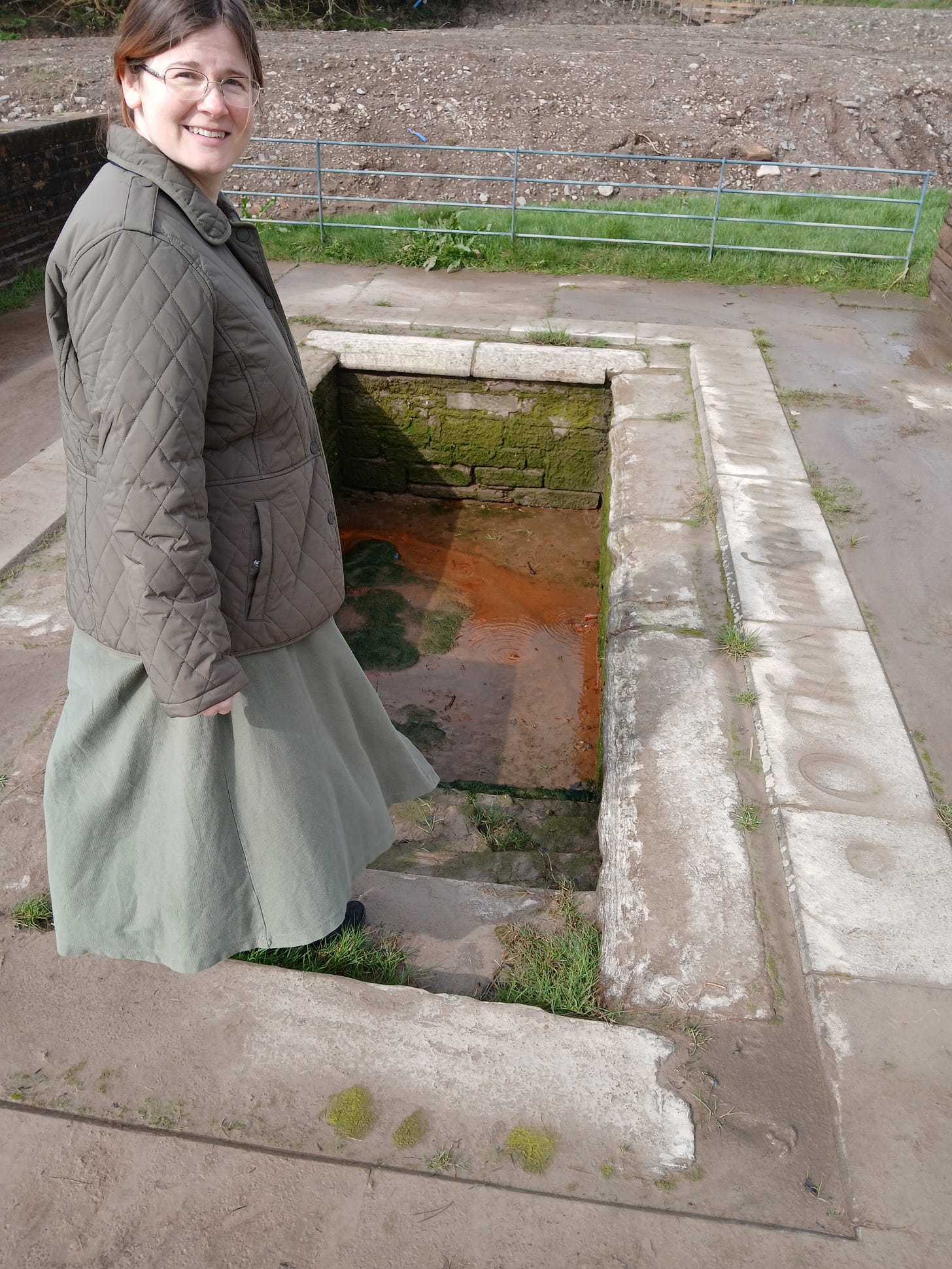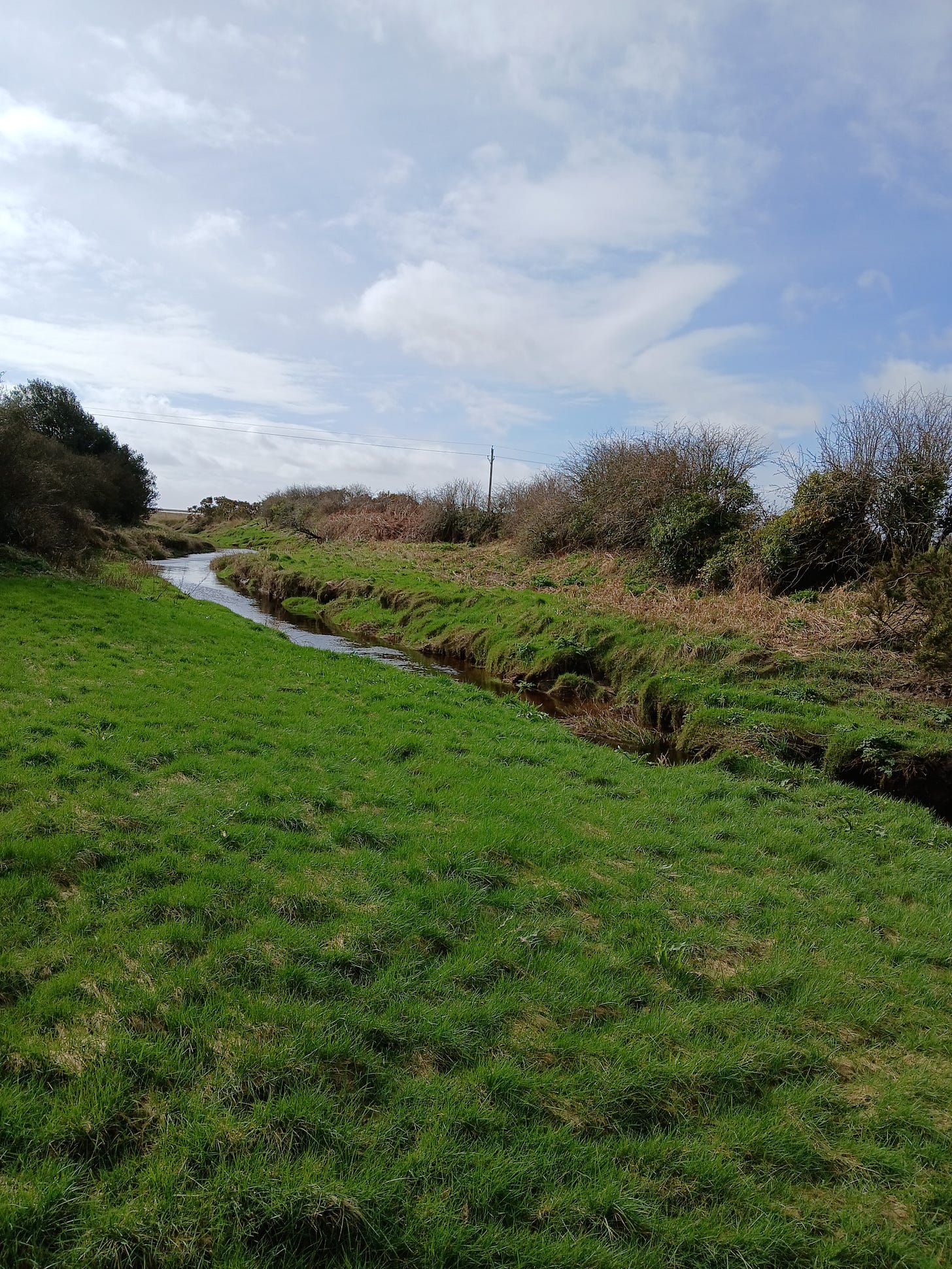Last year in March, as Nick and I were traveling through Scotland, we were just driving away from Caerlaverock Castle when Nick spotted a sign for The Brow Well. We quickly pulled over and got out to investigate, both of us excited by the prospect of discovering a holy well that wasn’t on our list!
This particular well is unique, as it is connected to the poet Robert Burns.
This spring is rich in chalybeate - containing iron salts, and the sign-board at the site vaguely states that it, “was popular with the residents of Dumfries at the time of Burns”. It’s popularity since is due to Burns, but nothing of it’s longer history — if it has one, remains. The only information about the well that I could find is wrapped up in Burns, with no other context offered.

It was in 1796 when Burns’ health was failing, that he made up his mind to try out the veracity of the well, and see if it could heal him. He was suffering from rheumatic fever at the time. He traveled a lot on horseback on account of his job as an Excise-man (a tax-collector). Being exposed to terrible weather, and some childhood illnesses may have led to his poor health. The well did not heal the poet, and little more than two weeks later, he died.
In the days since his death, a curb has been erected around the well, with lines from one of Robert Burns’ poems (most of this quotation was obscured by mud when we visited):
O Thou unknown, Almighty Cause,
Of all my hope and fear!
In whose dread presence, ere an hour,
Perhaps I must appear!
Nearby is the village of Ruthwell. It is tempting to think that there may be an association in the name Ruthwell, and the nearby Brow well, but I don’t think there is. The Scots word for Ruthwell is Rival, and if it comes from Scots, the word for well is wall. However, the Wikipedia article on the village suggests the Gaelic word Ruadhail for the town (found in place names like Glendaruel, which, coming from the word ruadh, which means a brown-red, rust color. This could definitely be a nod to the chalybeate spring of the Brow well.
Ruthwell is notable for another reason, as being the location where the Anglo-Saxon Ruthwell Cross is from. We did not go the the church to see the cross (unfortunately! I’m not sure if we realized it was so nearby, or perhaps it was closed that morning, I don’t recall). This ancient cross was heavily damaged during the Reformation, being broken up. The pieces were collected in the 1820s by a man named Henry Duncan, and he had them reassembled and restored.
So many holy wells in Scotland have disappeared. Urbanization, neglect, farmers cutting off water…there are many reasons why this has happened. Though, like the cross mentioned above, the greatest blow to holy wells was dealt by the Reformation. If the dying Robert Burns hadn’t tried, just before his death, to be healed by the water of the Brow Well, it may have sunk into obscurity, with no other records or information about it.
I am grateful that Nick noticed the sign for this interesting spot, and that we were able to stop and walk around, and think about Robert Burns. We visited a few other Burns-related sites, which I will recount soon on Substack, and this was an unplanned-for and exciting addition.





Those serendipitous kinds of moments are so special! What a great find!
I love little happy side adventures like this! I'm so glad you got to see it. 🥰